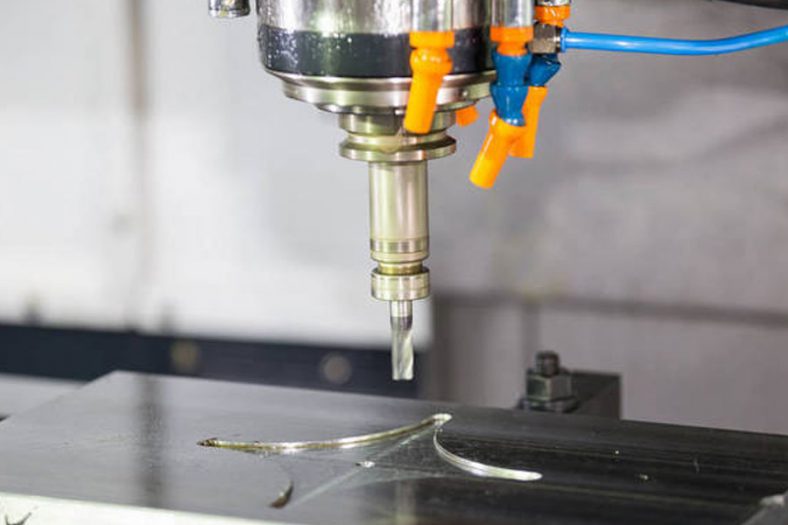
In the realm of modern manufacturing, the processes of shaping, cutting, and altering materials to meet desired specifications are essential for creating products that range from intricate electronic components to heavy machinery. Two primary categories of machining techniques have emerged: conventional machining and non-conventional machining.
These categories encapsulate a diverse array of methods that vary in their principles, applications, advantages, and limitations. This article delves into the in-depth comparison between conventional and non-conventional machining techniques, shedding light on their differences and showcasing the evolution of manufacturing technology.
Conventional Machining Techniques
Conventional machining refers to the traditional methods of material removal using mechanical tools such as cutting tools, drills, milling machines, lathes, grinders, and other similar equipment. These processes involve direct physical contact between the cutting tool and the workpiece. Some common conventional machining processes include:
- Turning: Turning is a foundational conventional machining process that involves rotating a workpiece on a lathe while a cutting tool removes material. This technique is ideal for creating cylindrical shapes such as shafts, threads, and intricate contours.
- Milling: Milling employs rotating cutting tools with multiple edges to remove material from the surface of a workpiece. It offers versatility in creating flat surfaces, slots, and complex geometries, making it a cornerstone of conventional machining.
- Drilling: Drilling involves creating holes in a workpiece using a rotating drill bit. This process is vital for applications ranging from simple holes to intricate patterns required in aerospace and automotive industries.
- Grinding: Grinding employs abrasive particles to achieve fine surface finishes and precise dimensions. It is used for materials that are difficult to machine conventionally due to their hardness or brittleness.
Non-Conventional Machining Techniques
Non-conventional machining, also known as unconventional machining or non-traditional machining, involves methods that do not rely solely on mechanical contact between the tool and the workpiece. Non-conventional machining methods often offer advantages in terms of precision, versatility, and the ability to work with heat-sensitive materials or complex shapes. However, they may be slower and more expensive compared to conventional methods for certain applications.
These processes are particularly useful for difficult-to-machine materials, intricate shapes, and situations where conventional machining may be inefficient or impractical. Some common non-conventional machining processes include:
- Electrical Discharge Machining (EDM): EDM utilizes controlled electric discharges to erode material from the workpiece. This technique is highly effective for complex shapes and hard materials that pose challenges for conventional methods.
- Laser Cutting: Laser cutting employs a high-energy laser beam to melt or vaporize material, resulting in precise and clean cuts. It is widely used in industries such as automotive, electronics, and medical devices.
- Waterjet Cutting: Waterjet cutting employs a high-pressure stream of water or water mixed with abrasive particles to cut through materials. It is suitable for heat-sensitive materials and intricate designs.
- Electron Beam Machining (EBM): EBM utilizes a focused beam of high-velocity electrons to remove material. This technique is commonly used in aerospace and nuclear industries for precision machining of intricate components.
- Ultrasonic Machining: Ultrasonic machining involves high-frequency vibrations transmitted to an abrasive slurry, resulting in the removal of material through abrasion. It is ideal for brittle materials and intricate shapes.
Comparative Analysis
- Material Compatibility: Conventional machining techniques are often limited when it comes to machining hard, brittle, or heat-sensitive materials. Non-conventional techniques, on the other hand, excel in these scenarios. EDM, for instance, can precisely shape exotic alloys and conductive ceramics that are challenging for conventional methods.
- Complex Geometries: Non-conventional machining techniques offer superior capabilities in shaping intricate and complex geometries. Laser cutting and waterjet cutting, with their non-contact nature, can achieve intricate patterns with high precision.
- Surface Finish and Tolerances: Conventional machining can achieve excellent surface finishes and tight tolerances. However, non-conventional techniques like EDM and ultrasonic machining can achieve even finer finishes and tighter tolerances, making them preferable for critical applications.
- Heat-Affected Zone (HAZ): Non-conventional techniques like laser cutting and waterjet cutting have minimal heat-affected zones, making them suitable for heat-sensitive materials. Conventional processes such as milling and grinding generate more heat, potentially affecting material properties.
- Speed and Efficiency: Conventional machining techniques are generally faster than non-conventional methods. While non-conventional methods offer precision and versatility, they may be slower in terms of material removal rates.
Advancements and Future Prospects
The manufacturing landscape continues to evolve with advancements in technology. Hybrid approaches that combine the strengths of both conventional and non-conventional machining techniques are emerging. These hybrid methods aim to maximize efficiency, precision, and cost-effectiveness while addressing the limitations of individual techniques.
In the dynamic field of manufacturing, the choice between conventional and non-conventional machining techniques depends on various factors such as material properties, geometry requirements, tolerances, and production volume. Conventional machining methods have proven their reliability over the years, while non-conventional methods have opened new avenues for precision and innovation. As technology advances, manufacturers will continue to explore the synergies between these techniques, propelling the manufacturing industry into a future of limitless possibilities.
